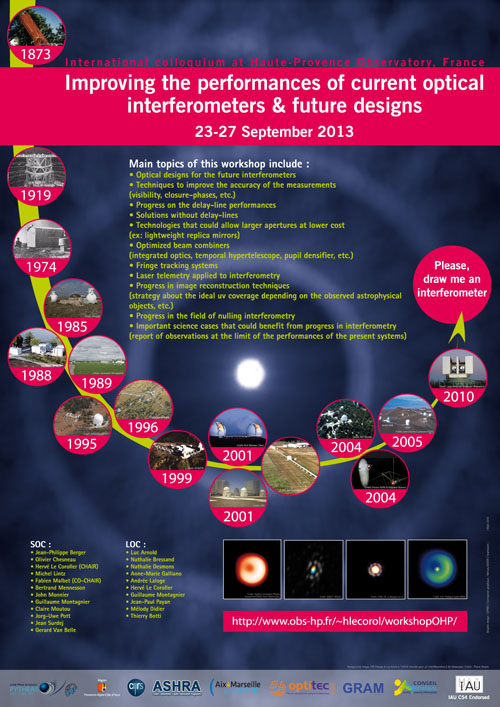Mes liens
Nouvel article sur le projet de télescope dilué
Lien ArXiv vers l'articler
Aims. Studies are under way to propose a new generation of post-VLTI interferometers. The Carlina concept studied at the Haute- Provence Observatory is one of the proposed solutions. It consists in an optical interferometer configured like a diluted version of the Arecibo radio telescope: above the diluted primary mirror made of fixed cospherical segments, a helium balloon (or cables suspended between two mountains), carries a gondola containing the focal optics. Since 2003, we have been building a technical demonstrator of this diluted telescope. First fringes were obtained in May 2004 with two closely-spaced primary segments and a CCD on the focal gondola. We have been testing the whole optical train with three primary mirrors. The main aim of this article is to describe the metrology that we have conceived, and tested under the helium balloon to align the primary mirrors separate by 5-10 m on the ground with an accuracy of a few microns.
Methods. Getting stellar fringes using delay lines is the main difficulty for astronomical interferometers. Carlina does not use delay lines, but the primary segments have to be positioned on a sphere i.e. coherencing the primary mirrors. As described in this paper, we used a supercontinuum laser source to coherence the primary segments. We characterize the Carlina’s performances by testing its whole optical train: servo loop, metrology, and the focal gondola.
Results. The servo loop stabilizes the mirror of metrology under the helium balloon with an accuracy better than 5 mm while it moves horizontally by 30 cm in open loop by 10-20 km/h of wind. We have obtained the white fringes of metrology; i.e., the three mirrors are aligned (cospherized) with an accuracy of ? 1?m. We show data proving the stability of fringes over 15 minutes, therefore providing evidence that the mechanical parts are stabilized within a few microns. This is an important step that demonstrates the feasibility of building a diluted telescope using cables strained between cliffs or under a balloon. Carlina, like the MMT or LBT, could be one of the first members of a new class of telescopes named diluted telescopes.

